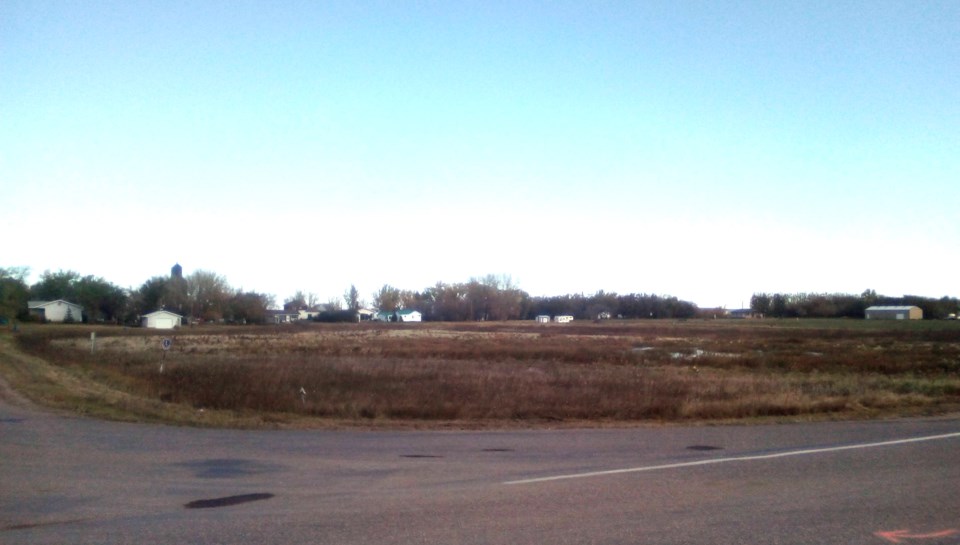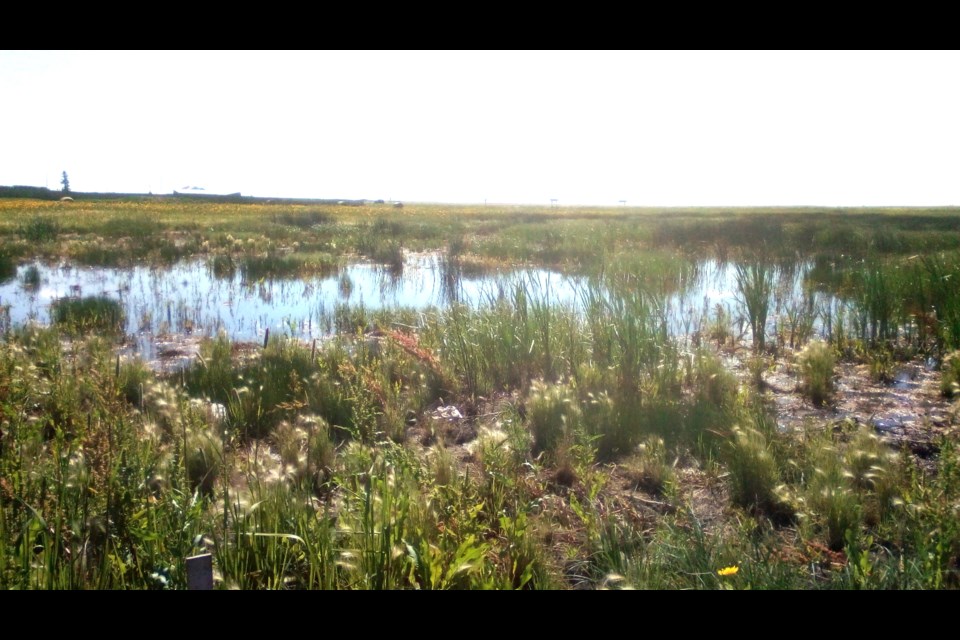The village of Riverhurst has received a federal grant for a two-year revitalization project that has the dual benefits of preserving an important natural wetland area while also providing the village with a way to control water management and flooding in the future.
Thanks to an initiative from the local Communities in Bloom group, the Riverhurst Wetlands Project has been approved for federal funding through the Environmental Damages Fund, which takes fines levied on polluters and puts them towards environmental restoration projects.
Project lead Penny Gustafson is excited to see the Riverhurst project given a boost, as she envisions the wetlands area becoming a valuable natural space for the village and surrounding area.
“It will provide a habitat for the wetland species of birds, plants, and whatever else, [and] it will provide a little bit of relief for the village, knowing that if there’s a lot of moisture in a year, those wetlands will drain somewhere other than flooding nearby homes,” said Gustafson.
The development will include approximately nine acres of land, located on the east side of the village’s entrance on Highway 42. An estimated 3.5 acres have been designated as natural wetlands, which will be restored and maintained.
“It's a lot smaller than [the marsh at] Lucky Lake or Chaplin, but still, birds will come here. They’re already coming here, with migration patterns,” said Gustafson. “There’s a lot of environmental benefits, in regards to increasing forest and protecting wetlands, which are unfortunately being lost at a very high rate.”
The additional dryland acres will be used to create walking trails and interpretive areas similar to the nature area at the Chaplin Shorebird Reserve, as well as a tree nursery that is already started, where hundreds of trees will be grown and used to replace ageing and damaged trees in the Riverhurst area.
Current funding for the project totals $146,100, including the federal cash grant and the in-kind donation value of volunteer time, equipment, supplies and other contributions from the village.
In order to return the wetlands to a healthy ecosystem, the project will create a constant level of water in the wetlands and install an overflow system that will protect the surrounding land from potential flooding.
Further work will involve planting trees to maintain environmental balance, adding rest areas and bird-watching spaces for visitors, and installing interpretive signage.
“We’re hoping we can dig out a portion of the wetlands to be a bit deeper in some areas, so water will be constant, and planting trees, putting in walking trails and bird nesting platforms,” said Gustafson. “Signage will describe the importance of the ecosystem, the different types of species that are in and around the wetlands, that kind of thing, so it will be an educational piece too.”
The land was previously used as pasture space for a local feedlot and several dry years in a row have left the wetlands in poor condition, so Gustafson is looking forward to revitalizing the area.
In its current state, the area is unable to sustain the diverse wildlife and plant populations that previously called these wetlands home, said Gustafson. It's also unable to collect higher-than-average annual precipitation, which is why the plan is to provide a water management aspect for the village in addition to the ecological benefits for shorebirds and other species.
“Especially over the last couple of years, it's been quite an eyesore, [with] the weeds kind of taking over in there and it's become a really dry mess [and] the cattle have been in there grazing,” said Gustafson. “So we decided we were going to do something about it.”
 Several dry years and continued cattle grazing have left the area in its current state, dried out and in need of restoration. / (supplied)
Several dry years and continued cattle grazing have left the area in its current state, dried out and in need of restoration. / (supplied)Progress has already begun, with biological assessment and engineering planning underway to determine how much work is needed to restore the wetland area.
Gustafson also said that several local farmers have already offered their labour and heavy equipment to the project, once construction begins, and the planning team is hoping to invite students from the nearby Central Butte School to take part in the process as an educational tool.
The Riverhurst Wetlands Project has been several years in the making, shared Gustafson, and she anticipates the completed nature area will provide a number of benefits to the village — beginning with the visual improvement when approaching Riverhurst.
“It will just look nicer, first of all, which is really important because you want the entrance to your village to look beautiful,” said Gustafson. “[And] It's really going to be a huge educational piece and demonstration site for different municipalities and farmers who have wetlands on their property.”
She also sees the wetlands as a place for recreational activity, ecological protection, and educational opportunity in the area — all of which are goals that Communities in Bloom, as a national initiative, looks to promote in municipalities.
“I think because it's just in the beginning stages, [people] maybe can’t see what it's going to be like, but I can, clear as day, and it’s going to be beautiful,” said Gustafson.
For more information and continued updates about the progress of the Riverhurst Wetlands Project, visit riverhurst.ca/the-riverhurst-wetland.
The village of Riverhurst is located 120 kilometres northwest of Moose Jaw, on the shores of Lake Diefenbaker.




